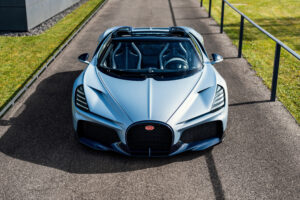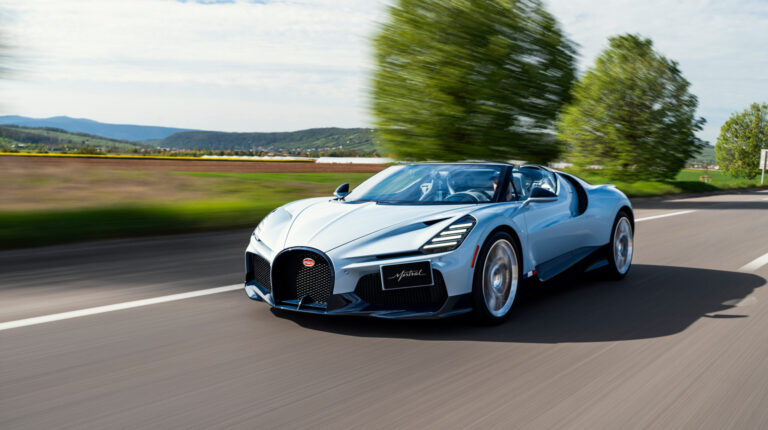The OEM says the Mistral embodies a blend of meticulously refined aerodynamics, a reengineered monocoque and the final incarnation of the W16 engine.
Bugatti CTO Emilio Scervo said, “We are in the last part of the testing program – we are getting close to the finish. From the initial validation stages to the intensive endurance tests, every aspect of the Mistral’s development is precisely planned and executed. The Mistral is the ultimate example of our dedication to setting new standards in roadster design.”

The Mistral has successfully passed crash tests, which are crucial for integrating a new monocoque design and meeting international safety standards for markets such as North America and Europe. Having completed aerodynamic evaluations and dynamometer tests for the W16 engine and its transmission, the prototypes are now undergoing tests to analyze performance under various driving conditions, focusing on safety, emissions, endurance and drivability.
The road tests for the Bugatti Mistral have been extensive. Prototype 2 has already covered 32,000km, demonstrating adaptability and durability across diverse terrains, from high-altitude mountains to sea level and heavy traffic conditions. The final testing phase will include an additional 5,000km on the track.

One of the most difficult aspects of the testing process, according to the company, is verifying the Mistral’s top speed, due to the logistical challenge of finding a suitable track that allows the vehicle to safely reach speeds over 420km/h.
Scervo explained, “We are planning to run the final high-speed test on one of the very few tracks around the world that allow us to run the test in safe conditions. The moment that we have access to that track, however, achieving the top speed will no longer be a problem.”
As the W16 Mistral nears the end of its testing journey, production at the Molsheim Atelier is expected to begin later this year.


